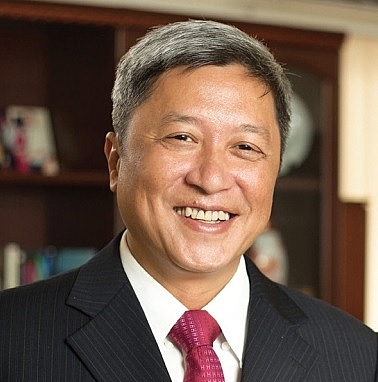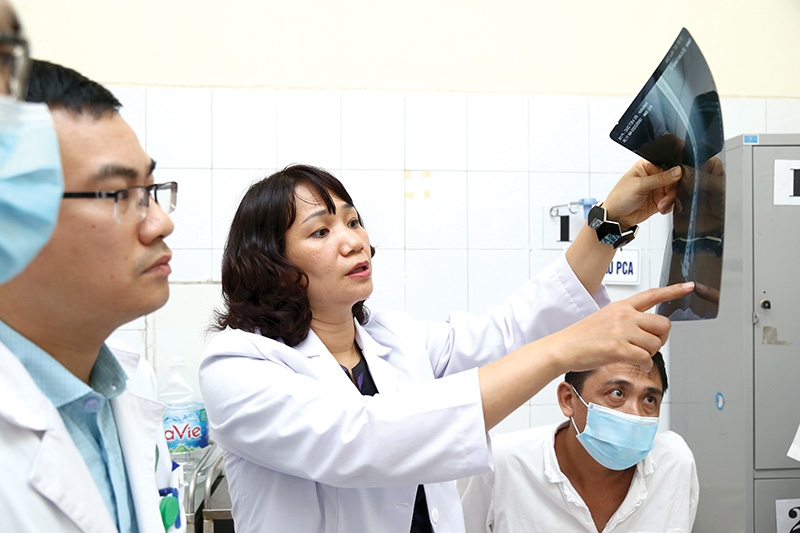Service boosts with hospital autonomy
Hospital autonomy is performed successfully in many countries, but others still encounter issues. How has the policy on hospital autonomy been performing in Vietnam, and what are the advantages and problems of doing so?
 |
| Nguyen Truong Son, Deputy Minister of Health |
According to the prevailing rules, hospital autonomy is being performed in four groups with different levels of financial autonomy. The higher financial autonomy a hospital reaches, the higher autonomy in professional performance, apparatus, and personal recruitment it gets, and vice versa.
The four groups are units self-guaranteeing regular spending and funding activities; units self-guaranteeing regular spending (no state budget allocation for their regular spending); units that get part of their state budget allocation for operation (part of state budget allocation for their regular spending); and units that get state funding for all operations.
During the performance of hospital autonomy, there are some advantages. Hospital autonomy prompts hospitals to increase the number and quality of services for the people, while changing people’s mindset about selection of public services. They are more willing to pay for high-quality services in the fields of investment socialisation.
In addition, hospital autonomy creates more favourable conditions for hospitals in ultilising financial resources of regular spending, saving costs, increasing incomes for staff, and setting up funds for investment and development, thus preventing them from reliance on state budget.
In spite of these, hospital autonomy still causes some difficulties for hospitals. Specifically, in regard to performance of the assigned professional duties, many hospitals, especially those in districts, have infrastructure and equipment that fail to meet the requirements so as to fulfil the state assignment.
In line with 2017’s Resolution No.19-NQ/TW on enhancing quality and efficiency of public service providers, and Resolution No.20-NQ/TW from the same year on enhancement of citizens’ health protection, cities and provinces are developing health centres and hospitals at district-level into multifunctional institutions to carry out medical examination and treatment, preventive healthcare, food safety, management of commune-level health units, and more. As a rule, most of these measures are funded by the state.
However, many localities grant autonomy of regular expenditure to district-level health facilities. As a result, they have to use revenues from medical examination and treatment to cover the other areas. This causes difficulties for their operations.
Regarding organisation of apparatus and workforce, the regulations on establishment and insolvency of constituents of state-owned units are not clear. Therefore, they do not dare to carry out restructuring for fear of breaking rules.
Worse still, due to unclear regulations on recruitment, many units doing autonomy in regular expenditure are still asked by provincial people’s committees to receive staff assigned by them, while reducing their workforce. Moreover, there are some units capable of covering 80-90 per cent of payroll, but all of their workforce still receive state payroll so that they have to cut the so-called state staff, leading to a shortfall of manpower to increase service quality.
 |
| While hospital autonomy could offer some advantages, the details of this approach still need discussion. Photo: Duong Ngan |
How does the performance of hospital autonomy impact the quality of examinations and treatment at state-owned hospitals, and what can the health sector do to prevent such drawbacks during implementation?
Locals now increasingly pay due attention to their health and their families’ health, thus increasing demand for medical examination and treatment. As grassroots health clinics are yet to meet those demands, they have often tended to visit central-level hospitals. To ease the situation, health facilities have to provide diversified services to meet such demands.
Hospital autonomy allows health facilities to take action to increase their sources of revenues by increasing numbers and service quality to satisfy varied needs.
However, hospital autonomy might highly prompt hospitals to pay attention to only service performance, and development of customised high-tech services to increase revenues; as well as examination and treatment, while less concentrating on preventive healthcare, grassroots healthcare, and others. Moreover, autonomy may lead to arbitrary decisions by the board of managers. In some cases, to increase revenues, it is possible that hospital directors order use of services over necessity, or a possible cut of technical and economic norms from services over acceptance, leading to poorer quality of services.
In order to ease the pressures for hospitals during the autonomy process and prevent possible negative phenomena, some work needs to be done. First is classifying health units to ensure that hospital autonomy is performed in line with their financial capacity. Those not capable of their own regular expenditure for normal operations should not be subject to hospital autonomy.
For multi-functional district-level health centres, the state must continue spending on preventive healthcare, health improvement, food safety, population, and operation of communal-level clinics. Second is continuing to perform by roadmap of correct and full calculation of medical service prices so that hospitals have sufficient financial sources to increase revenues and quality of services.
Thirdly, hospital-related regulations and the guidelines on professional knowledge and technical processes must be completed. Last is intensifying checks and inspections on enforcement of professional specialised processes, quality indexes, and financial management, while strictly handling possible violations.
Many countries make hospital autonomy a success. What lessons should Vietnam learn from them to increase implementation efficiency?
Regarding autonomy performance, while prices are not yet fully accounted for in hospital fees, units should differentiate kinds of services: providing services as requested by the state, and customised services, which they can make correct and full calculation of hospital fees.
In terms of organisation of apparatus, it is necessary to have regulations and detailed guidelines on mergers, establishment, and insolvency of units of state-owned hospitals. These units can practice autonomy when they are able to ensure regular expenditure, or regular expenditure and investment capital.
It is also necessary to have specific regulations on the number of people in and out of state payroll, making it the foundation to reduce the number of people in state payroll in line with Resolution 19, while allowing public hospitals having the financial resources to decide the number of staff not in state payroll to have capable manpower for normal operation and development.
Continuing the roadmap of carrying out correct and full calculation of medical service prices to ensure that medical staff receive appropriate payment is also crucial. In addition, there should be specific guidelines on establishment of joint ventures and cooperation investment contracts among hospitals, including state-owned ones, or between state-run hospitals and private ones.
What the stars mean:
★ Poor ★ ★ Promising ★★★ Good ★★★★ Very good ★★★★★ Exceptional
Themes: Healthcare Platform
- Takeda Vietnam awarded for ongoing support of Vietnam’s sustainability efforts
- Self-care signals shift towards sustainable healthcare
- DKSH to acquire Vietnamese healthcare distributor Biomedic
- Two national hospitals expand capacity with new facilities
- Vietnam moves to enhance disease prevention, equity, and sustainability
Related Contents
Latest News
More News
- Takeda Vietnam awarded for ongoing support of Vietnam’s sustainability efforts (December 31, 2025 | 21:00)
- Vietjet chairwoman awarded Labour Hero title (December 29, 2025 | 13:06)
- How to unlock ESG value through green innovation (December 29, 2025 | 10:03)
- AI reshapes media and advertising industry (December 29, 2025 | 08:33)
- FPT and GELEX sign deal to develop blockchain tech for global markets (December 29, 2025 | 08:29)
- Vietnam’s GDP forecast to grow by 9 per cent in 2026 (December 29, 2025 | 08:29)
- Women entrepreneurs are key to Vietnam’s economic growth (December 29, 2025 | 08:00)
- Vietnam's top 500 value-creating enterprises announced (December 27, 2025 | 08:00)
- The PAN Group shaping a better future with ESG strategy (December 26, 2025 | 09:00)
- Masan Consumer officially lists on HSX, marking the next phase of value creation (December 25, 2025 | 13:20)

 Tag:
Tag:




















 Mobile Version
Mobile Version